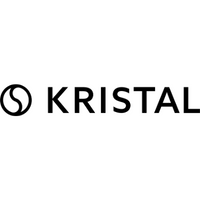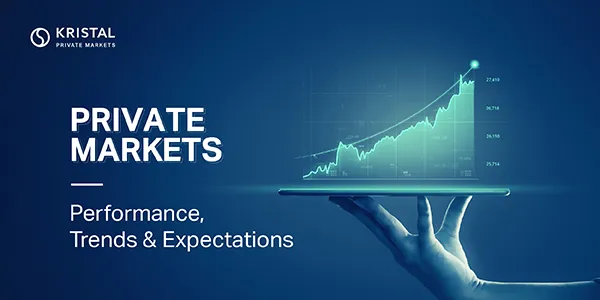
Kristal.AI
View Brand PublisherNumbers over narratives: 2022 was a year of readjustments in private markets
With the dominance of numbers over narratives, 2022 witnessed the emergence of obvious trends coupled with the readjustments of some old ideas in the sphere of private markets. Here’s a quick retrospective on the entire scenario.
Heading into 2023, Private Markets look both promising and challenging for investors, coupled with new opportunities, especially for new entrants.
“Higher interest rates will continue to affect valuations and debt quantum in private equity deals, making value creation through operational improvement critical to generating strong returns. Moreover, strategies with natural resilience to inflation, like value-oriented buyouts, infrastructure, and private credit funds are all set to benefit as investors weigh in on the prospect of recession,” said Manmohan Mall, Head, Kristal Private Markets.
Investments and exits may be more muted through 2023, but we might as well anticipate lucrative buying opportunities for distressed investing specialists and for funds seeking to grow their portfolio companies through add-ons.
Diverging from the subject a bit, let us look at the public markets. For much of 2023, the fate of public markets, including equities, fixed income, commodities, and foreign exchange market (FX) is all likely to hinge on a single decision, i.e., whether the Fed pauses its current tightening cycle.
Based on cues from the Fed, it's best to expect all publicly traded asset classes to either go down at once or rise altogether - reducing the diversification benefits. In such a scenario, private market assets will play a significant role in the investor’s portfolio. Alternative assets in private markets tend to be less correlated with such movements, especially if they are opportunities in private equity buyout funds, early-stage venture capital, or long-term infrastructure funds.
Moderating valuations as profitability outranks potential
2021 saw Private Market funding aggregate to over USD 630 billion, while in all probability the funding for 2022 remained below the mark of half a trillion dollars. Another striking trend was fewer unicorns being minted in 2022, with declining numbers in each quarter.
Secular changes across geographies have meant that deceleration in private markets has happened in terms of deal value and volume. The median deal sizes have fallen across stages, except for angel rounds.
In 2022, after a stellar two years, private markets appeared to be more sensitive to global investment risk appetite than their public counterparts. This fact was not helped over the past year, with the rising risk of geopolitical military escalation in Europe and the South China Sea, which harmed global supply chains, and its ripple effects being felt on expenses on operations.
For most firms across the globe, digitalisation and usage of SaaS and tech-enabled services are the most liquid of their capex (capital expenses) and opex (operating expenses), and often in the face of uncertainties, the first to downsize. This pain was particularly felt disproportionately in late-stage startups.

Furthermore, rising interest rates automatically transcended the opportunity cost of holding on to an investment over a long period. That might as well be the reason why the correction was seen in several sectors such as e-commerce, EV tech, fintech, crypto, and Blockchain space, where the “performance of now” has become more important than the “promise of the future”.
The playbook to win in private markets is changing
Technologies that serve the “problems of now” at scale have been less affected by the funding winter, even in the late stage. The domains of logistics tech, B2B Enterprise SaaS, cyber security, and defense tech have seen a relatively lesser downturn, and in some specific cases, the shares have even traded at a premium in the secondary markets.
With that, there has been a strategic shift to the early stage (Seed to Series A) companies, where check sizes are more manageable. Top-of-the-funnel strategies aimed towards capturing the winners of the next upcycle in private markets, thrived - especially with leading funds like Sequoia and Tiger Global committing more capital towards early-stage deals, both in terms of volume and value. Overall, early-stage deals shot up by 30 percent Year to Date (YTD) in 2022.
At the fund level, the legacy of this year will be seen in enhanced downside protection for new Limited Partners (LPs) for funds raised this year. The share of US LPs demanding enhanced liquidation preference rose to 13 percent, i.e., almost a 2.5x increase YTD. The above trends also pose questions for larger private market funds sitting on unprecedented levels of dry powder (USD 3.6 trillion) on how to deliver stronger returns to their founders.
Global private markets
2022 accounted for almost 1,248 active unicorns, with 68 percent located in the North American region, 38 percent in Asia, and 15 percent in Europe.
The US accounted for almost 50 percent of global funding alone, raising a total of US$ 160.8 billion across 8,800+ deals. By deal volume, the US accounted for 37 percent of the global total, followed by Europe and Asia, with 36 and 14 percent shares respectively.
2022 saw scepticism spill over in private markets as the focus shifted from ‘growth’ to ‘profitability’. Compared to 2021, 2022 saw fewer tech IPOs and meaningful corrections in valuations. Deal volumes shrank, with smaller cheque sizes and an increased focus on early-stage investments.
We are past the phase where a rising tide of liquidity lifted all boats. Private markets are likely to see greater differentiation in performance between companies, depending on the ability of their business models to generate cash. In the short term, it indicates opportunities in private credit and venture debt, and in the long run, it offers opportunities to invest in highly curated plays in the PE/VC space. ar. To help their clients access the desired investment strategy, has a variety of curated products across the private markets space including direct investments, PE & VC funds, Infra and Real Estate funds, Private credit funds, and much more.
In conclusion, the private markets have undergone significant changes in recent years. As they continue to evolve, both investors and businesses need to stay informed and adapt their strategies to capitalize on new opportunities and navigate new challenges.







